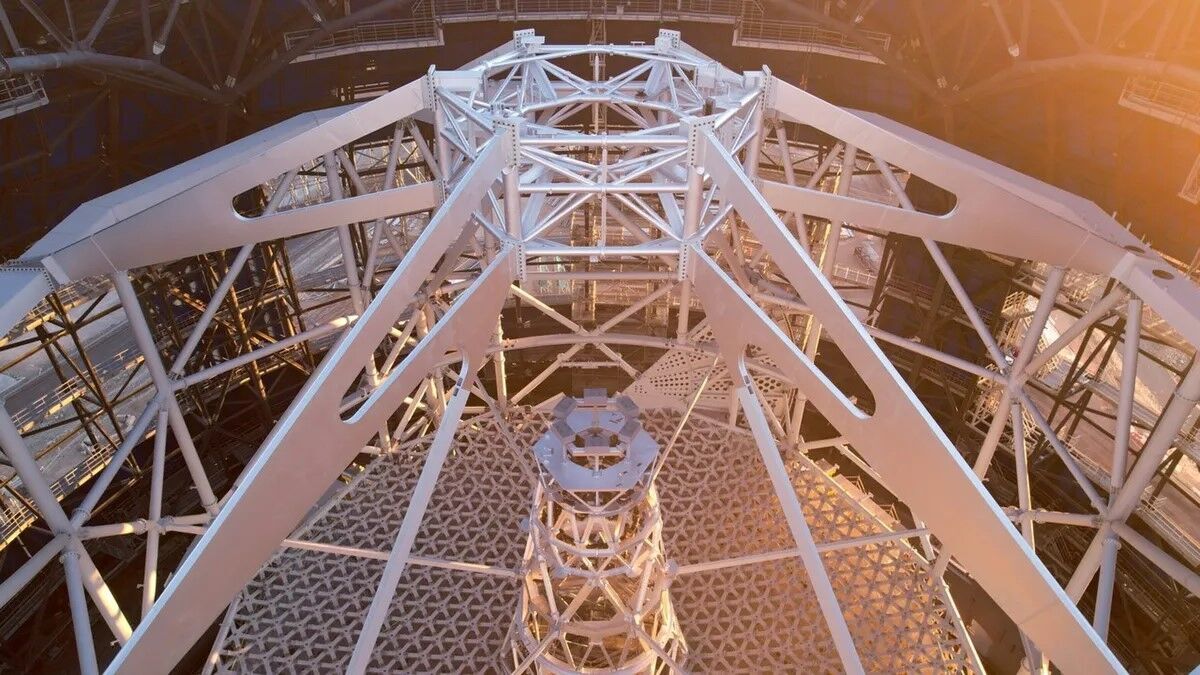News
Like a football field: what the frame of the world's largest telescope looks like. Photo
The Extremely Large Telescope (ELT) of the European Southern Observatory (ESO), which is designed to observe Earth-like exoplanets and measure the expansion of the Universe, has received a protective enclosure. The world's largest visible and infrared telescope, which is being built on Mount Cerro Armazones in Chile's Atacama Desert, now has a 93-meter diameter frame, the size of a football field.
New photos from ESO show that the dome's frame is now complete, while the outer shell, which will completely enclose the telescope, is still under construction. The powerful telescope is expected to be fully functional by 2028, Space.com reports.
According to a statement from the European Observatory, aluminum plates will be added to the outside of the frame to protect the telescope from the extreme environment of the Atacama Desert.
The construction of the Extremely Large Telescope can be observed on the laboratory's webpage using the installed webcams. The latest pictures show cranes busy installing the outer aluminum layers, also known as the cladding. According to experts, part of the dome will have large sliding doors that will remain closed during the day and open at night, allowing the telescope to view the sky.
Progress has also been made on a multifaceted structure inside the dome that will support the telescope's main mirror (M1) and a "spider-like" structure on top of it that will hold the telescope's secondary mirror (M2) in place, experts say.
Interestingly, the central mirror of M1 will be an exceptional 39 meters in diameter, while M2, which will be completed this year, will be 4.25 meters in diameter.
The European Southern Observatory also showed the inner frame of the "spider-like" structure, which was named for its shape, located above the base, with six arms extending from the center.
According to the designers, the skeleton itself is ready and they are awaiting receipt of all the individual segments, which will include five mirrors.
It is known that the M1 alone will consist of 798 glass-ceramic hexagonal segments, each of which is about 5 centimeters thick and approximately 1.5 meters in diameter. When fully assembled, M1 will be the largest mirror ever created for an optical telescope, the developers emphasize.
According to the builders, the central tower, the metal structure, and the polygonal base will be placed on a so-called high-rise structure. This metal frame is 50 meters high and is designed to accommodate all 5 ELT mirrors and rotate so that the telescope can be pointed at different parts of the sky, ESO says.
Only verified information is available on the OBOZ.UA Telegram channel and Viber. Do not fall for fakes!





























